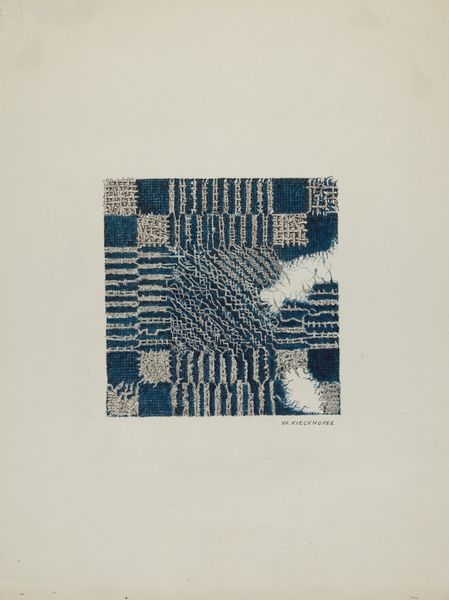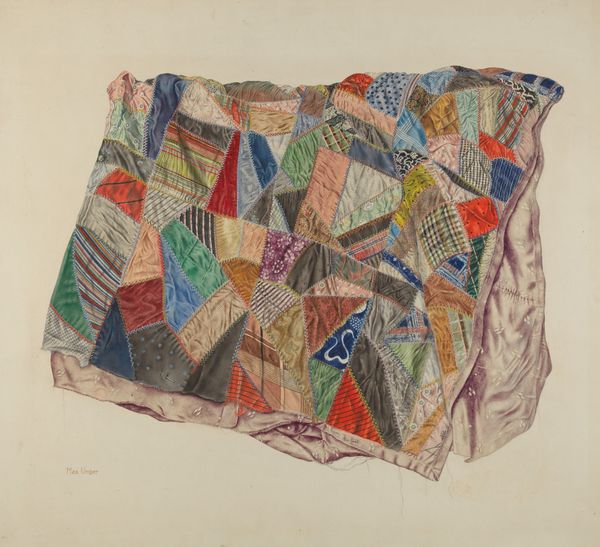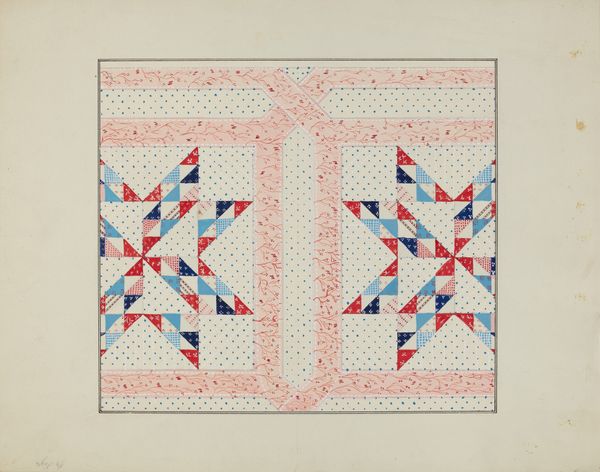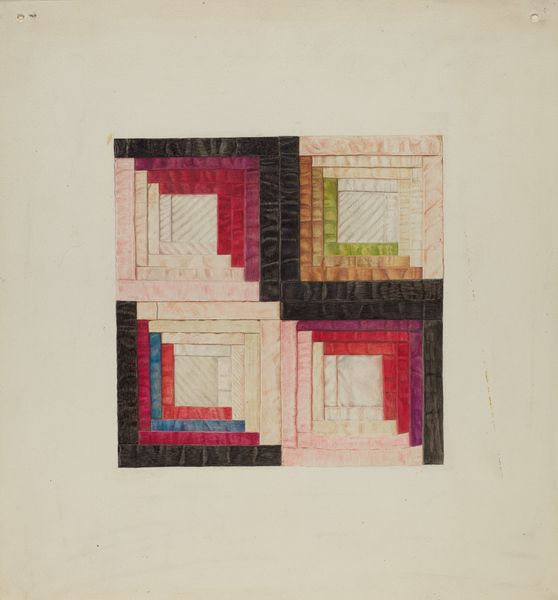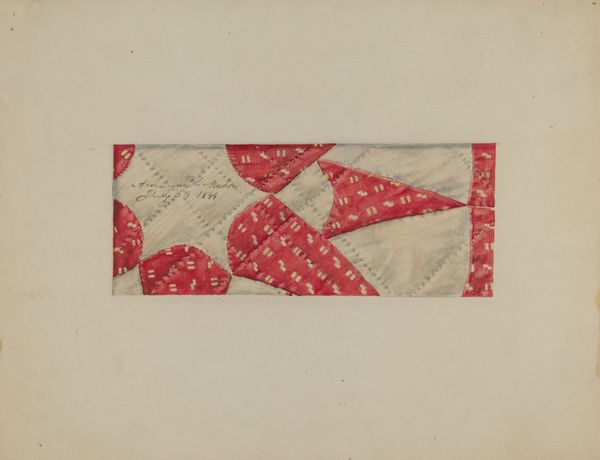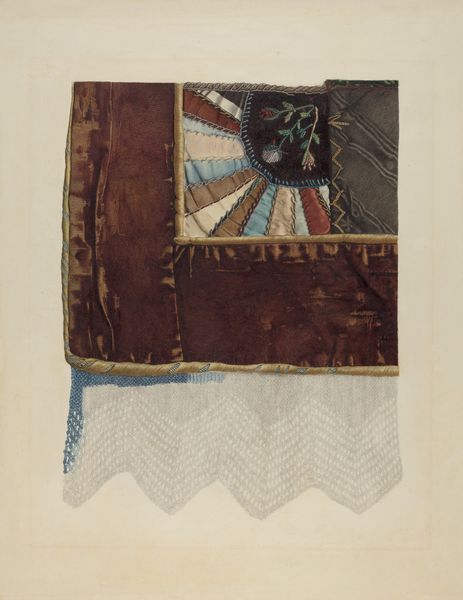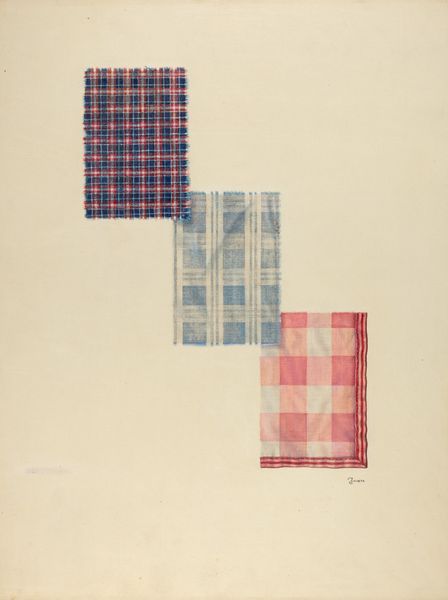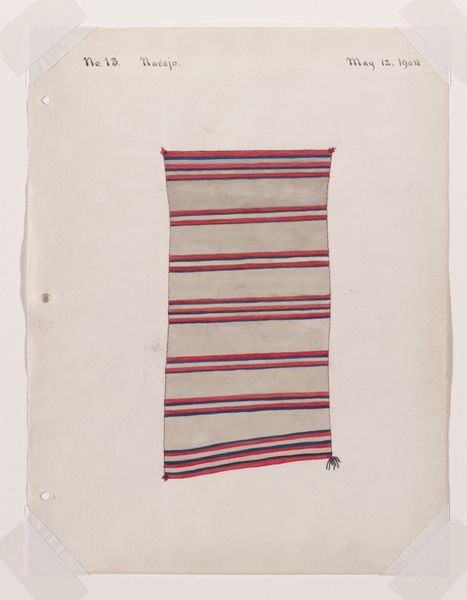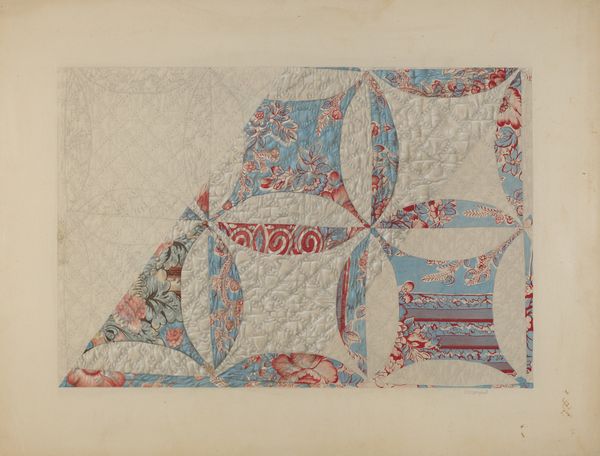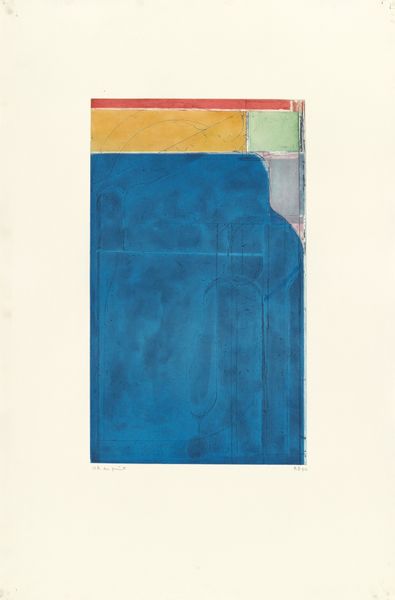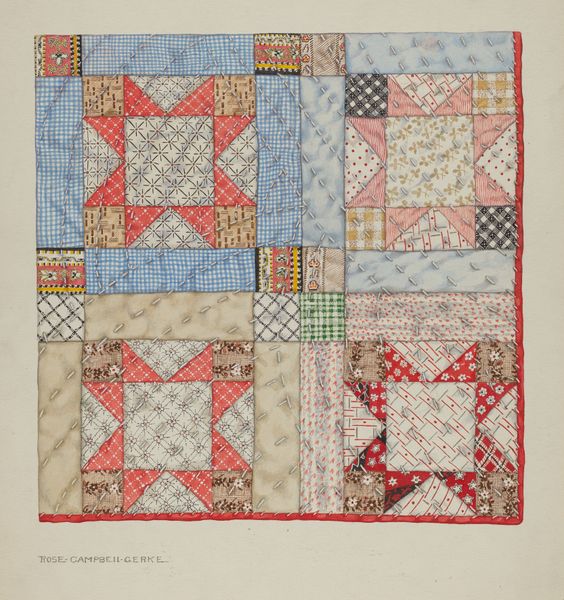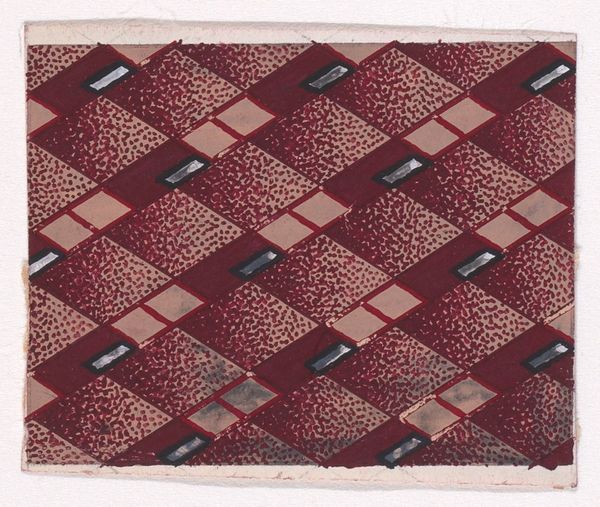
drawing, textile, watercolor
#
drawing
#
water colours
#
textile
#
figuration
#
watercolor
#
folk-art
#
watercolour illustration
#
watercolor
Dimensions: overall: 35.5 x 24.7 cm (14 x 9 3/4 in.)
Copyright: National Gallery of Art: CC0 1.0
Editor: This is Ann Gene Buckley's "Colonial Pocket," made around 1936, a watercolor and textile piece. It looks like a drawing of a patchwork apron. The mix of patterns is really intriguing. What do you see in this piece? Curator: I am immediately drawn to the construction of the composition. Buckley uses a patchwork design, ostensibly of textile squares, but renders them in watercolor, thereby creating a layered experience for the viewer. Consider the tensions created by the flat rendering against the expectation of textile texture. The implied domesticity juxtaposed with its delicate execution on paper opens lines of inquiry. Editor: It’s like she’s playing with our expectations of what the materials should be, how the final product should look. Why watercolour? Curator: Indeed. Notice also the artist's choices regarding line and form. The lines are deliberately naive, lacking the precise contouring we might expect, furthering its unique, handcrafted essence. It is critical to view these design elements and deliberate material uses through a Formalist lens in order to discern Buckley’s strategy. Editor: So, focusing on how she used materials, color, and form, regardless of its domestic function, tells us what she may be trying to convey. It’s less about what the image represents and more about how it is made. I hadn't thought about it like that! Curator: Precisely. Analyzing how Buckley manipulated these pictorial strategies to emphasize flatness, craft, and the deconstruction of an historical feminine form opens valuable insights into art production, even if we acknowledge further avenues for discussion. Editor: Thanks for that perspective. I think I understand the formalist approach better now!
Comments
No comments
Be the first to comment and join the conversation on the ultimate creative platform.
